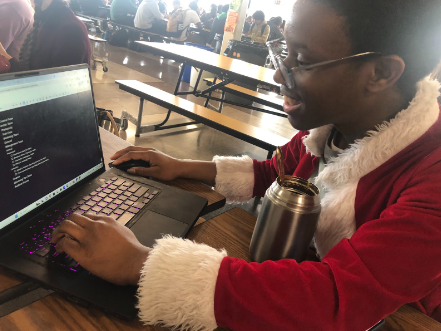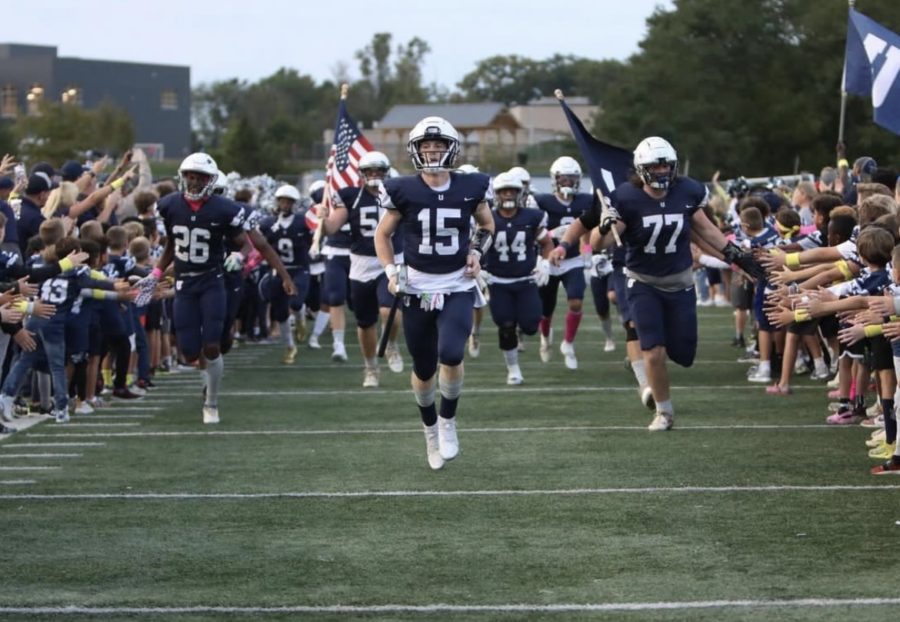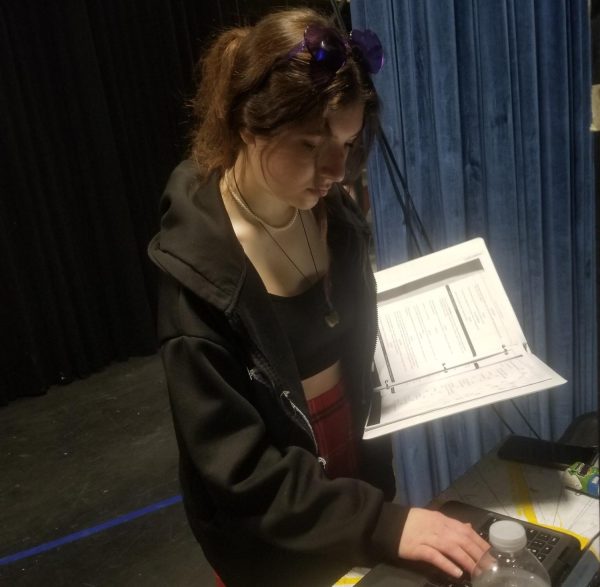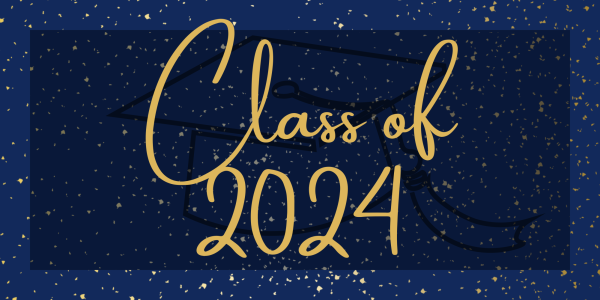Frederick’s native roots: How to celebrate Native American heritage this Thanksgiving
November 1, 2020
November is Native American Heritage Month, and as we prepare for a socially-distanced celebration of Thanksgiving, however that may look, it is important that we take the time this month to do our part in learning about Native American culture. At a time when community and togetherness has never been more important, it can be helpful to learn about the beginnings of our country and the people that walked our neighborhoods long before we did. Taking a walk in the shoes of someone else can help us to appreciate them a little bit more, and, if nothing else, will teach us plenty about ourselves. Let’s go back to a time before the troublesome coronavirus, to a time when Native Americans were settled on Frederick County soil.
Maryland’s Native Roots
Frederick County, along with much of Maryland, holds deep cultural history that continues to be discovered through studies of archaeology and artifacts. The revered Sugarloaf Mountain is a place where many of these artifacts are being found, according to Clare K. Hill of the Urbana Town Courier. “Relics can be found from the Shawnee, the Delaware, the Algonquin, members of the Iroquois Tribe and the Tuscarora in an area that is now called Yellow Springs,” she shares in her article “Sugarloaf: The Mountain that Speaks”. The Algonquin nation, she explains, were a group of hunters and gatherers that arrived in Maryland in 1688. The Shawnee, on the other hand, had been in Maryland much earlier, before moving to Ohio. Shawnee artifacts were found close to the Urbana High School campus, projecting that this tribe likely lived within modern-day New Market, Kemptown, and Ijamsville.
Likewise, Linganore is another landmark of rich native culture that can be found right within our community. According to Hill, “Chief Linganore was chief of the Susquehanna and died in 1735. It is rumored his body is buried inside of the wall in an old cemetery on Glissans Mill Road.” Lancers, the precursors to Linganore High School’s native mascot, were a group of elite warriors who fought under the direction of Chief Linganore, who has a unique history of his own. New Market resident Danielle Manos of The Frederick News Post shared the little information she could find about him, though there is not much available to the public.
In her article “Honoring history should be done right”, Manos relays how to best honor the native American tribes that once inhabited our land by telling their stories. The Susquehenna, fronted by Chief Linganore, were running into frequent clashes with Dutch settlers who sought to take their land. “ In one of these clashes,” she explains, “the Susquehanna chief lost his left ear. He forever lost his hearing there, but he claimed he began hearing divine messages from his missing ear. As such, his left ear was associated with wisdom, and he either adopted or was given the name ‘Left Ear’ from the Dutch language: Linker Oor. For one reason or another, this became what we know today as ‘Linganore.’”
Route 355, which runs right by our school, is an additional hotspot for Native American culture. Once known as the Great Road, Route 355, or Frederick Road, was traveled by all sorts of people, including indiginous people of Maryland. Susan Soderberg of the Montgomery County Historic Preservation Commission describes the Great Road as an “Indian trail leading from the Piscataway settlement at the mouth of Rock Creek to the great ‘Conestoga,’ a trail that included footpaths and waterways… from the Susquehanna River in Pennsylvania southwest into Virginia and beyond.”
This trail was so popular with the natives that when european settlers found it, they claimed it for their own and “widened it to accommodate wagons full of goods to trade and supplies to build homes.” To think natives once walked the very land on which we drive makes it seem as though native heritage is not just important to natives, but to Americans of all kinds. Without native influence, America would not be what it is today.
Indiginous Maryland Today
Though few, there are still natives within Maryland communities to share the stories of their ancestors and carry on traditions from times long buried.
On October 5th of this year, Smithsonian’s Isabel Spiegel published a lovely article telling the story of the Lumbee Indians, currently residing in Baltimore, who are on a mission to share the stories of their ancestors to anyone who will listen. Ashley Minner, a member of the Lumbee tribe, is working to discover pieces of her ancestry in order to be sure that her people’s “contributions to [Baltimore’s] cultural legacy will be rendered visible to history.” So far, she has uncovered a map of a Lumbee community long-since buried beneath buildings and urban endeavors, as well as photographs, telephone and census records, and newspapers from the Lumbee’s heydays.
Although there are currently no legally recognized tribes in the state of Maryland, many Lumbee still live in Baltimore, fighting the same battle as their ancestors: federal recognition. “The Lumbee have fought unsuccessfully for full federal recognition from the U.S. government since 1888. Congress passed the Lumbee Act in 1956, which recognized the tribe as a Native American association,” Spiegel writes. However, despite the passing of this act, the Lumbee did not receive federal recognition. Today, “a bi-partisan bill called the Lumbee Recognition Act is now pending before Congress,” in hopes to provide the Lumbee with the recognition and rights they’ve too-long waited for.
In addition to this pending act, the Lumbee hope to receive even more recognition for their ancestors through Minner’s research project. She hopes to establish, with the help of University of Maryland, Baltimore County, a Lumbee archive within the campus. According to Spiegel, “she believes the collection could take as long as five years to assemble,” and will include both digital and physical information so that it is as accessible as possible.
In addition to this progression for the Lumbee tribe, Baltimore is paving more paths for modern day Native Americans and their ancestors. Baltimore Sun’s Talia Richman reported last month that the city council of Baltimore ruled to change Columbus Day to Indiginous People’s Day with the help of Maryland voters. This choice was made in respect for the Native Americans of the past and present, in an effort to place Baltimore on “‘the right side of history’”, according to Jessia Dickerson of the Lumbee tribe.
City Council President Brandon Scott went as far to say that replacing Columbus Day was “‘something that should have been done and over with… years ago,’” claiming that the celebration of Columbus Day is just another nod towards America’s “‘legacy of systematic racism and oppression,’” given the harmful ways Christopher Columbus treated indiginous Americans upon his arrival to the states. Although late, this change is proof that modern Native Americans are continuing in their fight against oppression, pushing towards their deserved rights and recognition, if not, gradually.
Ways To Help
Chased to the outskirts of society all throughout American history, the indiginous people of America often remain silenced, and many have become impoverished as a result of living under a national government that does not properly support them. However, there are many ways Urbana students are able to help these people and ensure that their voices are heard.
One of the most important things we can do as fellow Americans is educate ourselves. This means reading up on native history, as well as learning about the culture of modern natives. Here are some useful websites and stories that can aid in such an education:
https://www.nativeamericanheritagemonth.gov/
http://www.native-languages.org/maryland.htm
In addition to educating ourselves, there are plenty of charities that specifically reach out to Native Americans and help those who are in need. These include the Native American Heritage Association, American Indian College Fund, and the Association on American Indian Affairs.
Even though we are only students, we are indeed the next generation. If we educate ourselves about Native American culture and lift the voices of today’s indiginous Americans, we can ensure that the natives of our future will not include a silenced culture and suppressed people, but rather be the flourishing well of deep culture they should have always been allowed to be.
As Thanksgiving approaches, I encourage you to take the time to appreciate a culture outside of your own. You may just find that their way of life isn’t so different from your own, and, perhaps, you may find something beautiful.
Works Cited
Editor. “Native Americans in Maryland: A Short History | | International Magazine Kreol.” Kreolmagazine.Com, 15 Aug. 2017, kreolmagazine.com/culture/history-and-culture/native-americans-in-maryland-a-short-history/#.X3zgo2hKjIU. Accessed 6 Oct. 2020.
Leftwich, Jeremy. “Linganore Has Indian Roots.” The Frederick News-Post, 3 June 2002, www.fredericknewspost.com/archives/linganore-has-indian-roots/article_a7e7ab47-f441-5058-9b88-42225f2d5bc7.html. Accessed 6 Oct. 2020.
Market, Danielle Manos, New. “Honoring History Should Be Done Right.” The Frederick News-Post, 8 Sept. 2017, www.fredericknewspost.com/opinion/letter_to_editor/honoring-history-should-be-done-right/article_50fc50f3-127b-5e5e-ba27-1801f9d12c38.html#comments. Accessed 7 Oct. 2020.
“Maryland Indian Tribes and Languages.” Www.Native-Languages.Org, 2016, www.native-languages.org/maryland.htm. Accessed 6 Oct. 2020.
Maryland State Archives. “Native Americans, Maryland.” Msa.Maryland.Gov, 5 Aug. 2020, msa.maryland.gov/msa/mdmanual/01glance/native/html/01native.html. Accessed 6 Oct. 2020.
National Endowment for the Humanities. “National Native American Heritage Month.” Www.Nativeamericanheritagemonth.Gov, www.nativeamericanheritagemonth.gov/. Accessed 6 Oct. 2020.
Richman, Talia. “Baltimore City Council Votes to Change Columbus Day to Indigenous Peoples’ Day.” Baltimoresun.Com, 5 Oct. 2020, www.baltimoresun.com/politics/bs-md-pol-columbus-day-renamed-20201005-yws3zdtexnclfeywhbvuztksdu-story.html. Accessed 6 Oct. 2020.
Soderburg, Susan. “The Great Road: The Story of Frederick Road.” Germantown, MD Patch, 19 Jan. 2012, patch.com/maryland/germantown/the-great-road. Accessed 6 Oct. 2020.
Spiegel, Isabel. “A Native American Community in Baltimore Reclaims Its History.” Smithsonian Magazine, 5 Oct. 2020, www.smithsonianmag.com/smithsonian-institution/native-american-community-baltimore-reclaims-its-history-180975948/. Accessed 6 Oct. 2020.
The Associated Press. “Maryland Site Likely a Hub of Native American Settlement.” Www.Theepochtimes.Com, 7 Nov. 2015, www.theepochtimes.com/maryland-site-likely-a-hub-of-native-american-settlement_1892919.html. Accessed 6 Oct. 2020.








































